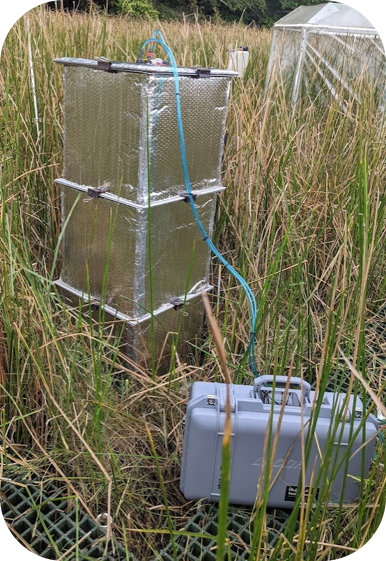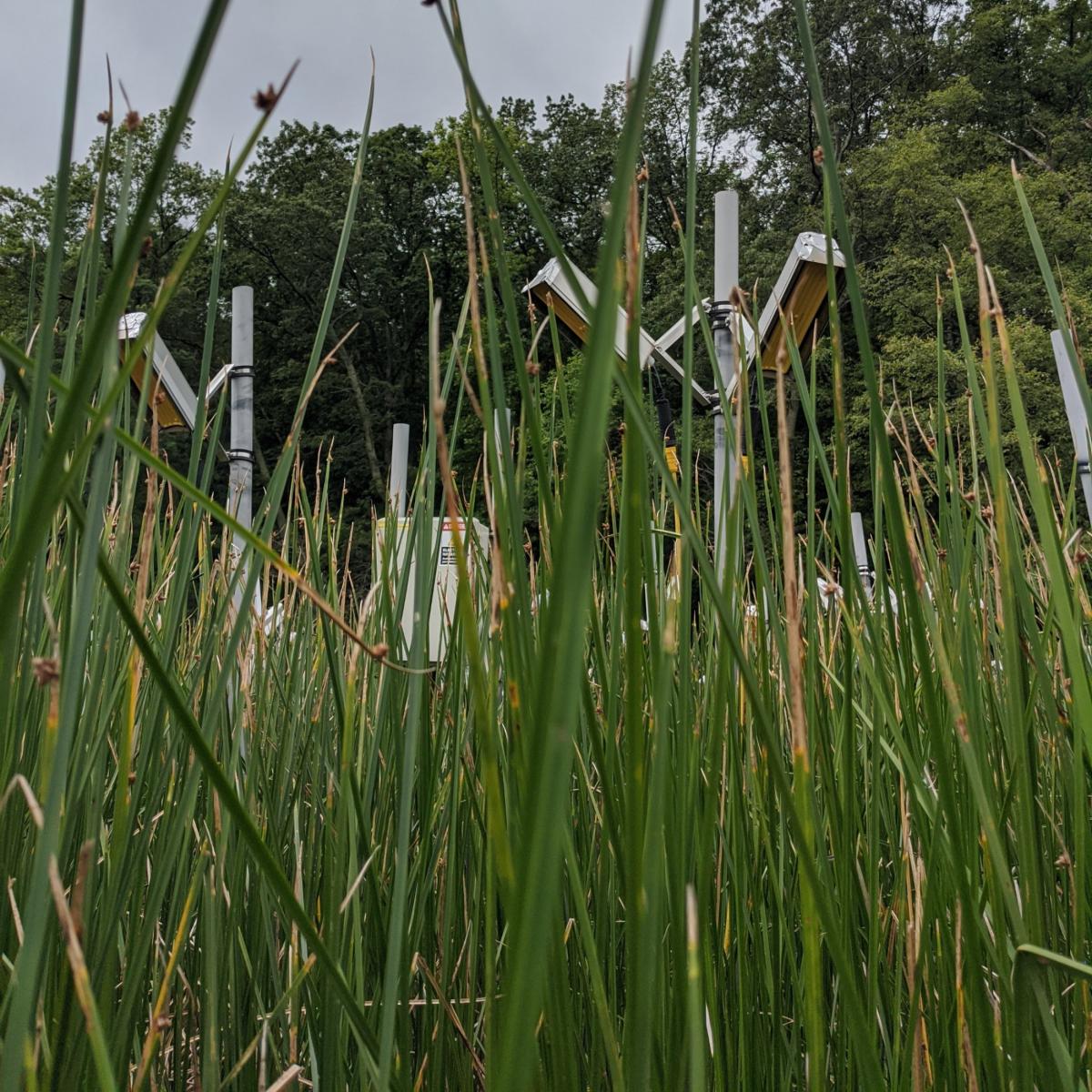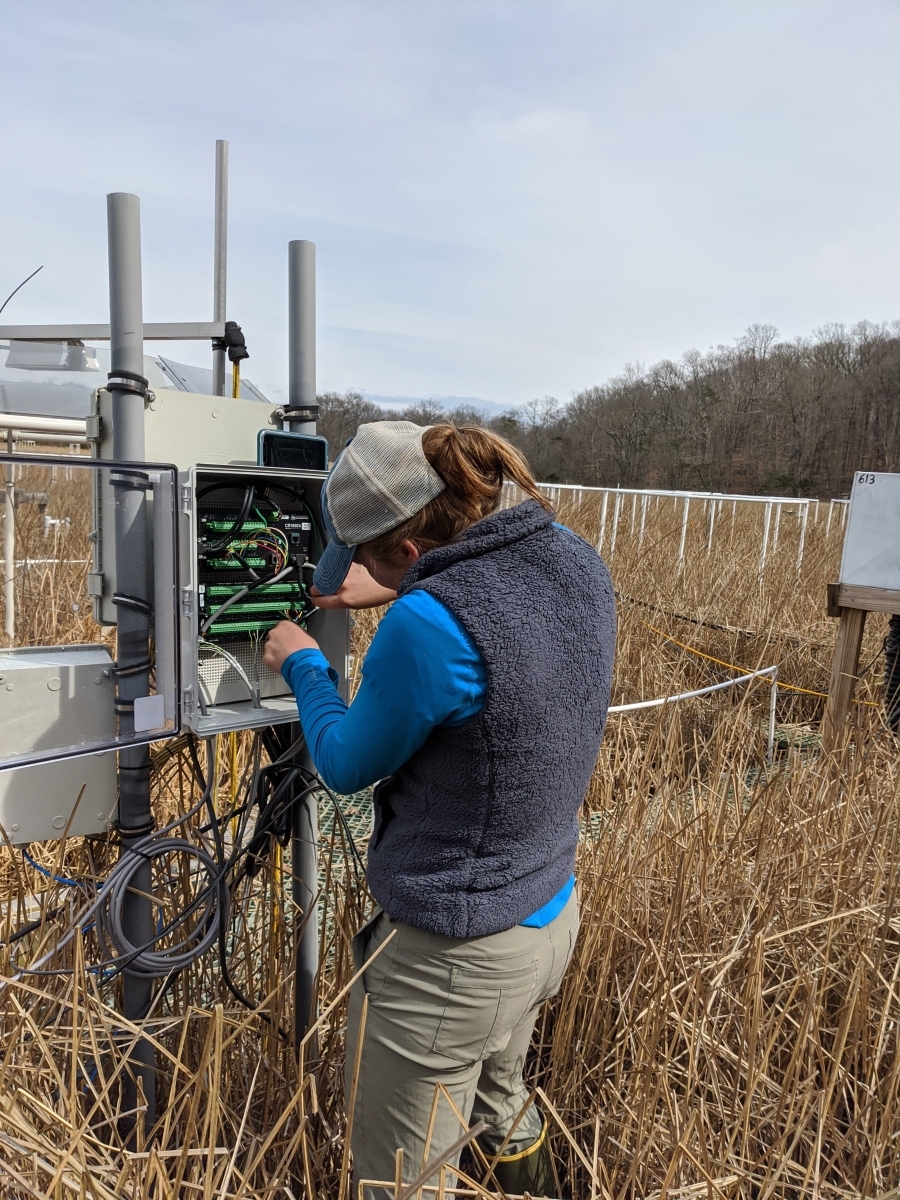Research ProjectSalt Marsh Accretion Response to Temperature eXperiment (SMARTX)
Affiliated Labs
Description
The Salt Marsh Accretion Response to Temperature eXperiment (SMARTX) is a whole-ecosystem active warming experiment in the Global Change Research Wetland dedicated to understanding the ecosystem-scale consequences of warming and elevated CO2 on carbon cycling in tidal wetlands. In particular, we are looking at how the plant- and microbial-driven processes that regulate coastal wetland carbon sequestration are affected by multiple simultaneous ecosystem stressors (warming and elevated CO2) and what that means for coastal wetlands and other ecosystems in the future. The interdisciplinary team includes researchers from SERC, Virginia Institute of Marine Science, Oak Ridge National Lab, USGS, and Rider University. SMARTX has been supported by the US Department of Energy Environmental System Science program since 2016.
Visit the Global Change Research Wetland homepage
How It Works
In 2016, we set up 30 new plots that are exposed to a range of warming. Some plots are left at ambient temperatures, while others are heated year-round to 1.7°C, 3.4°C, and 5.1°C above ambient using a combination of infrared lamps and belowground heating cables. An integrated feedback control system allows the heating system to be constantly adjusted to keep each plot at exactly the right temperature. The experiment is set up in two areas of the wetland, to compare how different plant communities respond to warming, and each treatment is repeated three times, to capture any spatial variability. There are also some plots with open-top chambers that are used to increase the atmospheric CO2 concentration to 750 parts per million, like in the CO2 and nitrogen experiment. SMARTX was the first replicated experiment in any terrestrial ecosystem that combined feedback-controlled whole-ecosystem warming with elevated CO2.
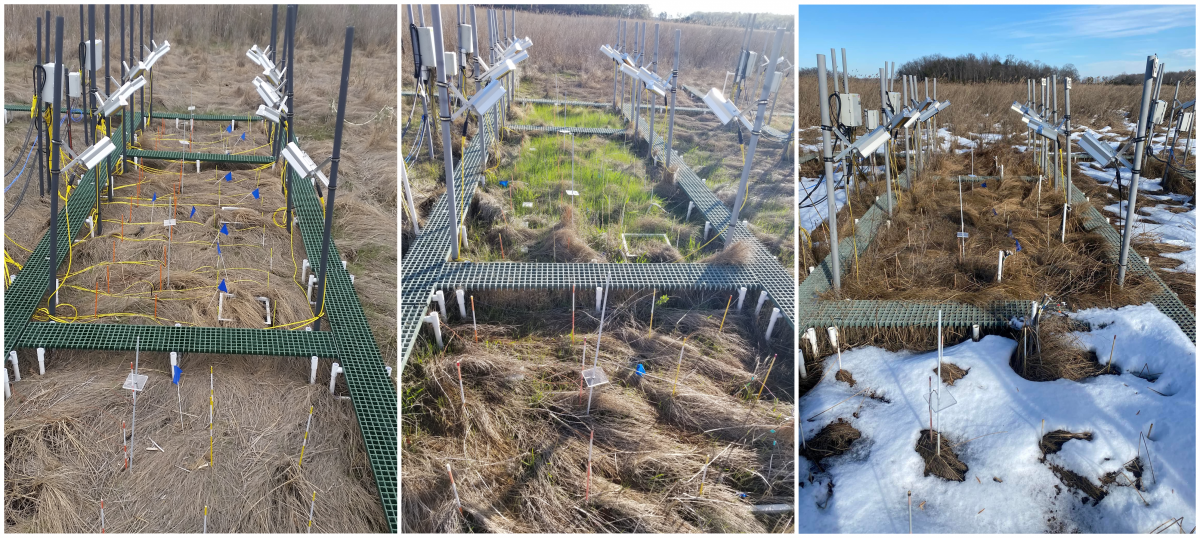
Current Themes
Methane cycling
Though brackish wetlands are not typically assumed to be large sources of methane (CH4), we have found that CH4 emissions (measured with manual chambers) are substantially higher from the warmed plots, suggesting large shifts in anaerobic metabolism. This discovery led to further work looking at the effect of warming and elevated CO2 on carbon mineralization, redox potential, and marsh stability, as well as how plant traits affect CH4 dynamics.
Aboveground and belowground plant responses
In coastal wetlands, plant biomass can be a key component of whether or not the ecosystem will survive rising sea levels, especially highly organic sites like GCREW. In the first two years of SMARTX, we discovered that plants respond asynchronously to warming, with a large increase in belowground biomass occurring at +1.7°C, an effect that we attribute to changes in N cycling under the different warming scenarios. We are currently analyzing a 5-year dataset to understanding how warming shifts phenological trends in Schoenoplectus americanus.
Soil redox potential
One way that plants influence ecosystem responses to global change is by regulating the soil oxidation-reduction environment through supplying both electron donors and electron acceptors. To study treatment effects on this plant response, we installed a network of probes that have been continuously measuring redox potential in the +5.1 °C plots (ambient and elevated CO2) since March 2020. We've found that in the rooting zone, redox potential is consistently higher in elevated CO2 plots, which we attribute to higher rates of oxygen transport through the sedges. In January 2022, we added an additional network of probes in the ambient plots, to look at temperature effects.
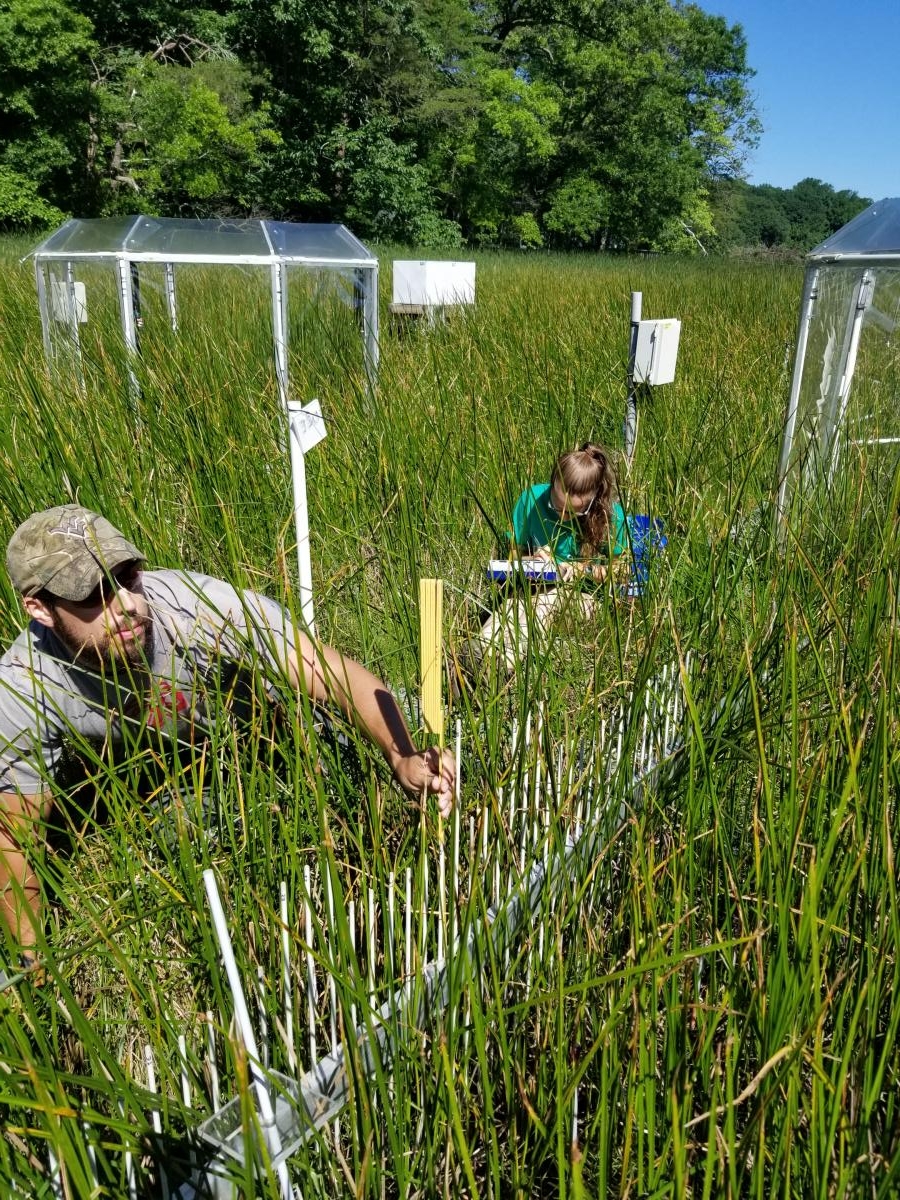
Marsh Elevation
Elevation gain is a key component of coastal wetland survival; when the marsh can no longer keep pace with sea-level rise, flooding increases and eventually kills the vegetation, exposing the carbon-rich soils to erosion. Collaborators from the Virginia Institute of Marine Science track elevation gain and loss in the SMARTX plots using soil elevation tables (SETs).
Plant Physiology
Collaborators from Rider University focus on plant physiological responses to warming and elevated CO2 by measuring stomatal conductance, chlorophyll fluorescence, and other stress-related physiological traits of species and relating them to plant growth and performance.
From Field Data to Models
SMARTX has two integrated modeling efforts that operate at different scales. Collaborators at the Virginia Institute of Marine Science are working on a point-based model designed to capture ecogeomorphic feedbacks that influence carbon cycling in tidal marshes, while collaborators at Oak Ridge National Lab lead the global-scale modeling component, updating a terrestrial component of DOE's E3SM to represent tidal wetlands.


